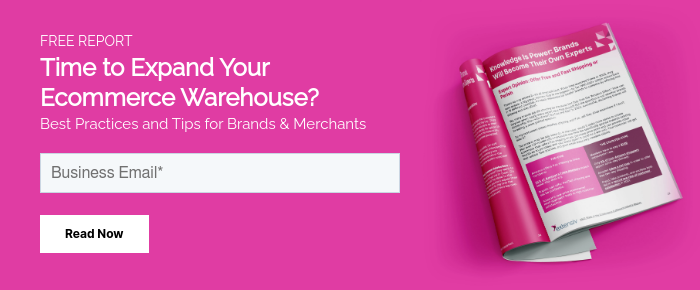Becoming a successful merchant on Amazon requires a mastery of many skills. One of the most important is determining pricing strategies and how much to sell your merchandise for. Consider factors like the price paid for the item, FBA competition, current sales rank, and pricing history.
Pricing too high or too low
If you price too high, you’ll be left with stock that sits around collecting dust. If you price too low, things will be flying off your shelves at the expense of your profit. The key is to find that nice middle ground where you can make a profit while retaining a loyal customer base.
If you’re a seller on Amazon and want to your achieve your Buy Box dreams, check out this compilation of our favorite pricing strategies. They can be applied manually or by using repricing software, which will allow you to set your prices more efficiently. Someone once said, “money can buy everything except time,” but with a repricer solution, that is exactly what you’re buying.
1) Don’t Be the Cheapest Seller
It's easy to assume that if you offer the best price, people will flock to your page. They will, but not for the right reasons. If you bottom out your prices often enough, buyers may associate your products with being cheap quality instead of competitively affordable, and it’ll quickly become a race to the bottom.
Instead, price your products 1.5% more expensive than the lowest seller. This way, you don’t get caught up in a race to the bottom, but are still inexpensive enough to be competitive.
FBA Seller Ryan Grant uses this as his default strategy across 70-75% on his inventory, allowing him to win a share of the Buy Box and maximize the value he receives for each sale.
2) Do as the Others Do
If you don’t want to follow the repricing strategy above, here’s one that's closely related but works fairly differently. Instead of almost price-matching the cheapest sellers, turn to your FBA competitors and see what prices they’re using.
Matching the lowest FBA competition will result in an increase in sales but reduce your profit margin. This more aggressive repricing strategy may be useful to help make a quick sale or shift some stock which has been hanging around for a while in Amazon’s warehouses costing you monthly fees. Try to set a base price for items that you will never go below to avoid getting involved in a price war that hurts your profits.
3) Work Your Intelligence and Experience
Repricing software is great because it's easy and efficient to navigate, but you should also use your business experience. This is because any sort of software program is only as good as the one giving it instructions—you.
If you’ve reached the point where you’re in need of a repricer (according to FBA seller Jeff Roth, this is usually at 50 items or more) then you’ve also got the intelligence and experience to put your repricing strategies to good use.
Take some time to do things like:
- Anticipating competitors’ trends.
- Use past information to make future decisions.
- Realize the difference between an item that’s a lost cause (and in need of a quick sale) and one that just needs a little boost.
- When to use repricing and when to bundle, upsell or do something else to move an item.
4) Identify What Needs to be Repriced First
Before you rush out to stick a virtual ‘for sale’ sticker on your entire inventory, take a step back and evaluate your inventory and repricing priorities.
For example, your ‘sitters’ (those pesky products that seem to love the FBA warehouse more than being in a buyer’s hands) should probably get looked at first so you don’t get stuck with outdated stock. Plus, you can avoid Amazon’s long-term storage fee (twice yearly) by not having items that are there for more than a year (365 days).
Another strategy is to start at the top in terms of what costs the most in your inventory, and then knock a few dollars off it. Shoppers who’ve had their eyes on a high priced item will get excited as the item becomes more affordable.
5) Use Software to Apply Principles of Supply and Demand
Repricing is pretty easy when it comes to supply and demand. If there are more items than buyers, then the shoppers can be picky about prices and hold out until it lowers to their satisfaction.
Conversely, if they can’t resist the hottest toy and are in fierce competition with each other, then you can up the price a bit to enjoy a little more profit.
Repricing software essentially allows Amazon sellers to automatically compare their product prices to those of competitors’ and adjust them accordingly (within their own set upper and lower limits).
Sellers’ prices are so closely linked to their sales performance and product visibility on Amazon that they need to continually ensure their products are priced competitively. Doing this manually if you have hundreds or thousands of products simply isn’t viable.
With an increasing number of sellers using repricing software, it is becoming an essential part of your e-commerce business, not just a nice tool to have.
In terms of repricing strategy, remember that repricing software is still only a tool and you’ll get the best results from it if you set it up to suit your overall business goals, and identify who you do and don't want to compete with.
Although there are many sellers on Amazon selling the same products, they are all different businesses, with different circumstances, goals and inventory lists. A modern repricing solution gives you the ability to set your repricing rules to sell your stock in the way you need to, at the price you’re prepared to sell at.
Conclusion
Having your items priced competitively is one of the best ways to increase profit. Some repricing strategies will succeed right away, while other times you’ll have to experiment. If you’ve got more than 50 items in your inventory, it’s time-consuming to manually reprice every single one of your listings, so it makes sense to use a repricing solution. Also, check out our guide to Merch by Amazon to figure out if this might be a good platform to sell your merchandise.








